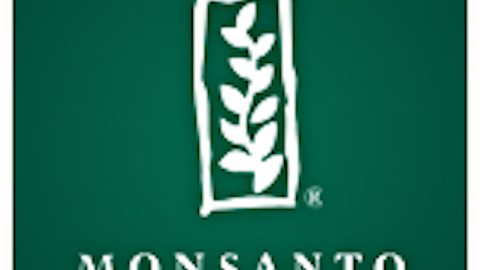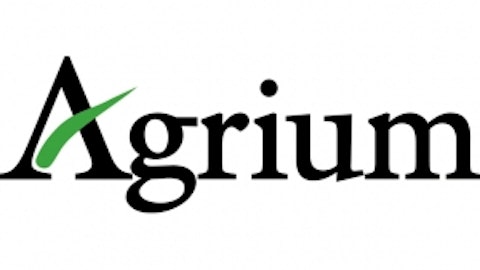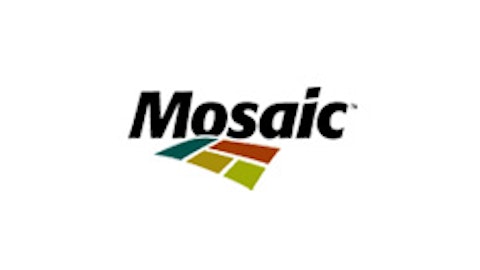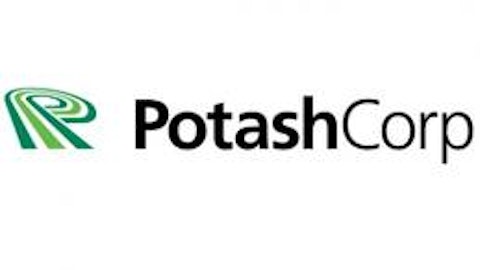According to the report on the 2013 outlook of the U.S. Agricultural sector published in February, the U.S. Department of Agriculture expects the sector to grow significantly through 2013 with the majority of that growth expected in the second half of the year. The sector is recovering following a slowdown last year, which affected several companies involved in the business. Even the manufacturers of Agricultural chemicals were not spared, as prices for their products tanked during the year. Companies like Potash Corp./Saskatchewan (USA) (NYSE:POT), Mosaic Co (NYSE:MOS) and BASF fluctuated during 2012, and seem to have carried that behavior to 2013.
These stocks have global exposure, which means their stability and growth cannot be determined by the U.S. market alone. For instance, Potash Corp./Saskatchewan (USA) (NYSE:POT) relies heavily on global fertilizer sales, which are subject to fluctuations in foreign exchange and other macro-economic risks. Right now, the U.S dollar is strengthening against major global currencies, including the Euro, Japanese Yen and the Chinese Yuan among others. This means that converting global sales for these companies would result in hefty foreign exchange losses.
Potash Corp./Saskatchewan (USA) (NYSE:POT)
In the most recent quarter, ended March 31, Potash Corp./Saskatchewan (USA) (NYSE:POT) reported $0.63 in earning per share from sales of $2.1 billion. This beat last year’s figures of $0.56 and $1.746 billion respectively. However, the company is yet to come close to beating its EPS of $0.96 from revenue of $2.325 billion reported in the first quarter of 2011. This indicates that Potash continues to trail its highest achievement as some of its key markets struggle economically.
China and Brazil are some of Potash Corp./Saskatchewan (USA) (NYSE:POT)’s major offshore markets, and as noted over the last one-year and a half, these countries have failed to match their record economic growth rates reported in previous periods. The Euro zone crises have not weighed well on Potash’s business, as the Euro remains under pressure from the U.S dollar. This is why the stock fluctuates by as much as 10%, within a month or two, either side of the chart.
Mosaic Co (NYSE:MOS)
Mosaic Co (NYSE:MOS) engages in the production of two major agricultural chemicals, Potash and Phosphates. Phosphates account for a majority of Mosaic’s sales, about 60%. A majority of the segments sales are international – nearly 65%. On the other hand, a majority of Potash segment’s revenues come from North America – about 60%. Nonetheless, the weighted sales indicate that overall, a majority of Mosaic’s revenue comes from overseas.
In the most recent quarter, ended February 28, Mosaic Co (NYSE:MOS)’s revenues grew by 2.3% from the same quarter last year. Overall volume sales grew significantly, but this was wiped by low prices, hence the net growth of just over 2%. The low prices, which apparently are beyond Mosaic’s control, make the stock very speculative. Additionally, just as noted in the case of Potash, a majority of the company’s income is offshore, and based on the current performance by the U.S. dollar, this does not work out well for the company.
BASF
BASF’s business does not carry much exposure to the agricultural environment as Mosaic Co (NYSE:MOS) and Potash. The Germany-based company produces a wide range of chemicals used in areas such as solar cells and other electronic components. Its link to agriculture comes in the form of crop protection products.
The company’s Agricultural Solutions segment provides fungicides, herbicides, and insecticides, seed treatment products, and pest control products for public health. It also provides professional pest control and landscape maintenance. The company is looking to shift its research facility to Asia by setting up a chemical plant in India. This could open it up well for to the emerging markets; hence, raising its prospects.




